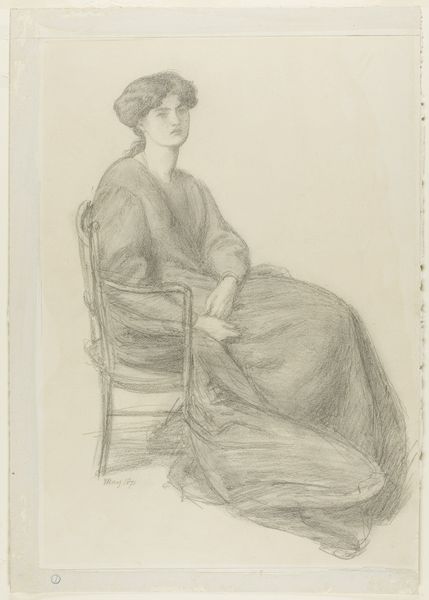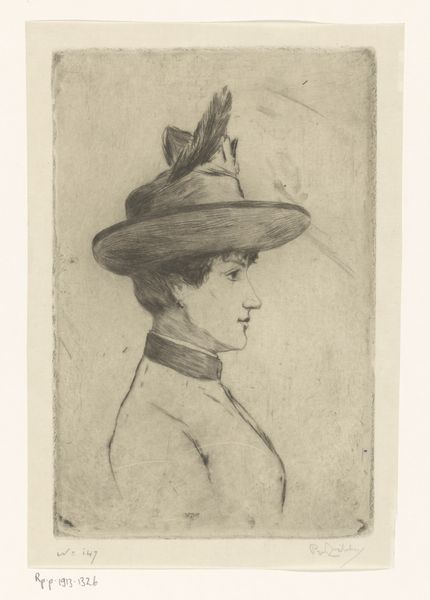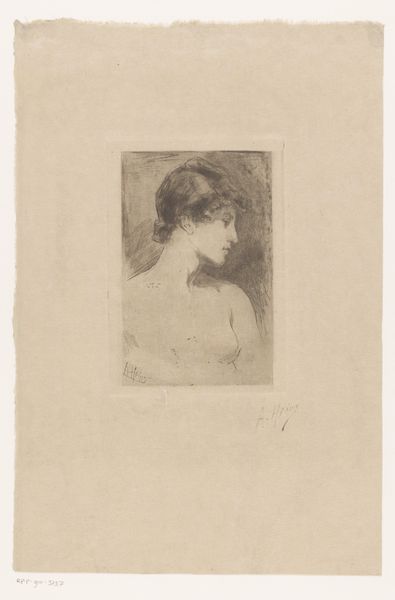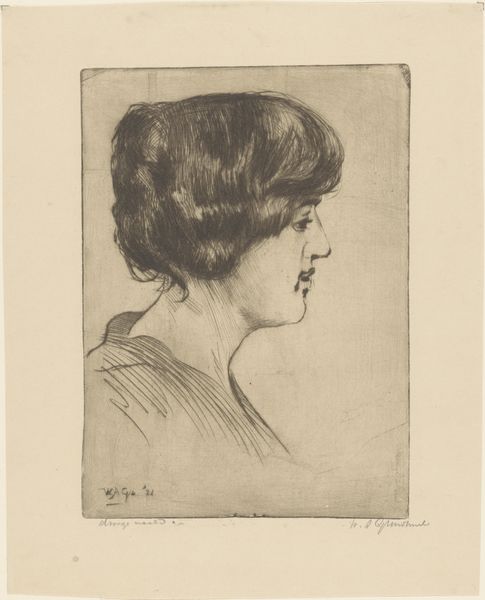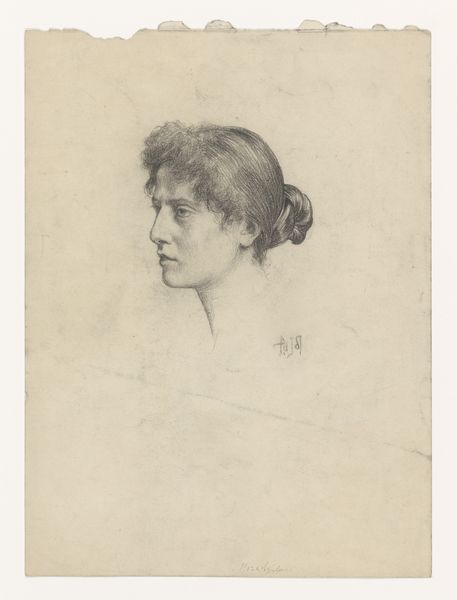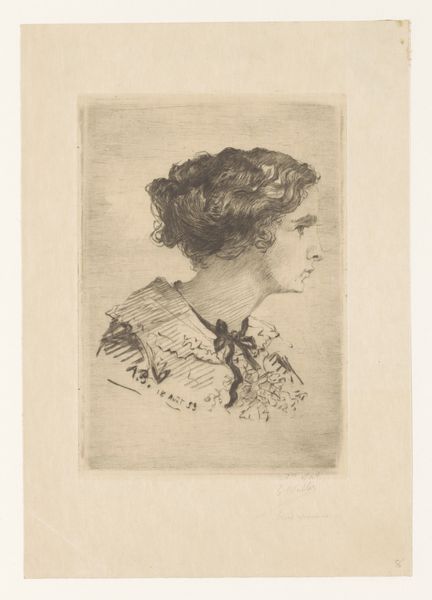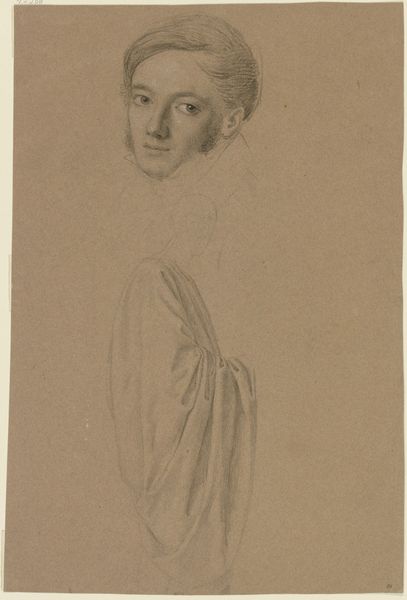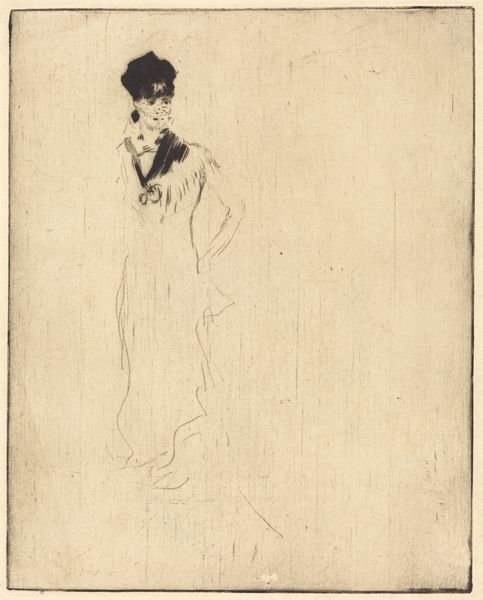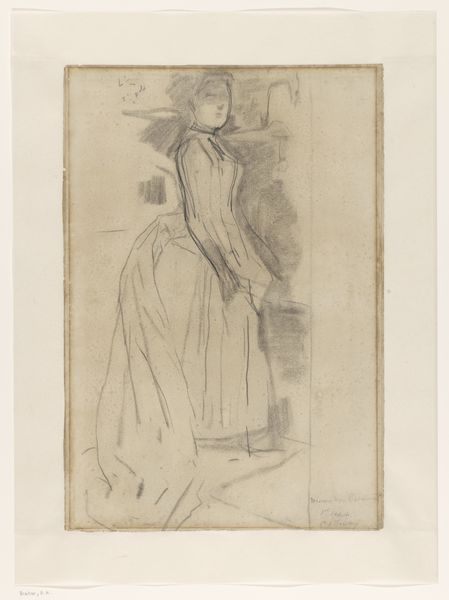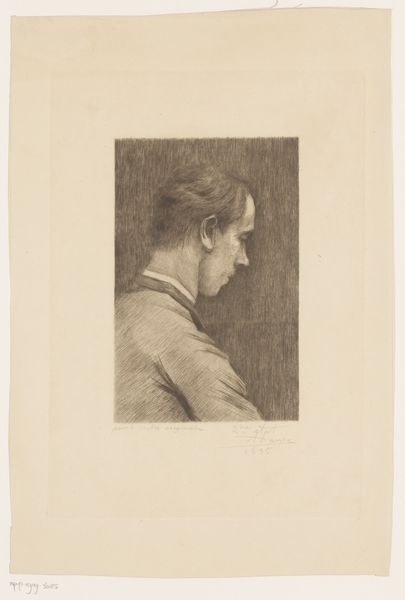
Dimensions: height 384 mm, width 156 mm
Copyright: Rijks Museum: Open Domain
Editor: Here we have Edgar Chahine’s 1899 etching, “Zittende vrouw met een tennisracket,” which translates to “Seated Woman with a Tennis Racket." It's predominantly done in pencil, giving it a soft, almost hazy quality. The woman seems self-assured, and I’m curious how a snapshot of leisure connects to the broader themes of the period. What do you see in this piece? Curator: It is tempting to see leisure and dismiss its role in shaping class and gender identity, however, I think it is important to look closely at the materiality and social context. Notice the etching technique. How does that repeatable print technology democratize or reinforce societal power structures when documenting leisure activities of the upper class? Consider what resources went into creating her clothes, her tennis racket, and even the artwork itself. This isn't just about sport; it's about visualizing status through objects. Editor: So, you are less interested in what she's doing and more in what went into the piece to depict a lifestyle? Curator: Precisely. Who has access to the materials to play tennis and create art about leisure? And who then profits from the distribution of these kinds of images? The ‘how’ and ‘who’ of its making and dissemination reveals power at play. Look at the deliberate choice of materials. Pencil and etching offered affordability, extending the reach of the image, perhaps creating aspirational desires in viewers. How does mass reproducibility affect the perception of authenticity or value of the image of "the sporting life?" Editor: That's an insightful approach; I didn't initially think of the impact of the chosen medium on the accessibility and message. Curator: Looking through a materialist lens redirects our focus from the individual to the broader network of labor, consumption, and power that shapes both the art and the society it reflects. Editor: Thank you. Considering materials and manufacturing certainly enriches the narrative! Curator: It highlights that art is never detached from the material conditions of its production and consumption.
Comments
No comments
Be the first to comment and join the conversation on the ultimate creative platform.
